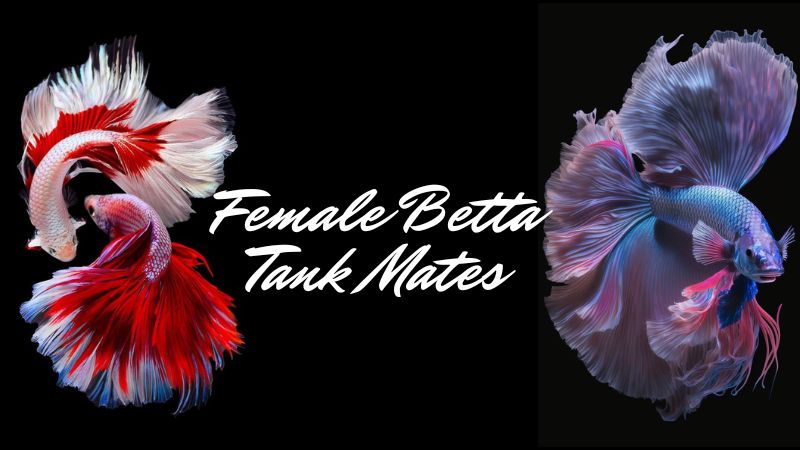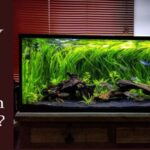While known for their vibrant colors and flowing fins, betta fish, particularly males, can be notoriously territorial. This often leads to the misconception that they can’t share their space with other fish. However, female bettas, with their slightly less aggressive nature, can potentially coexist with carefully chosen tank mates. Introducing the right companions can add vibrancy and activity to your aquarium, but choosing compatible tank mates for female bettas requires careful consideration. Let Tropical Fish Haven help you learn about female betta tank mates.
Female Betta Tank Mates
Gasteropelecus maculatus Marthae
- Size: 4cm
- Personality: gentle
- Culture temperature: 23-26°C
- pH: 6.0-7.0
- Water hardness: 20-200
This exotic fish can be an interesting addition to your aquarium. Their name comes from their flat, wide and ax-like appearance. With a unique body and unique fin structure, the hatchetfish can jump out of the water extremely easily. So if you want to keep this fish, your tank needs to have a lid.
They are gentle fish and can live in harmony with most other fish, including bettas. If you don’t have a lid for your tank, at least plant floating plants such as lotus, water lily or water hyacinth to limit fish jumping out.
Corydoras aeneus
- Size: 4 cm
- Personality: Gentle
- Culture temperature: 23-26°C
- pH: 6.5-7.5
- Hardness: 50—150 ppm
In this list, Corydoras aeneus are probably the most suitable and perfect choice to keep with betta fish. They have a gentle personality and often work at the bottom of the tank, so they will easily stay away from the betta fish’s activity area.
Corydoras aeneus are equipped with hard scales and pointed fins so they can protect themselves in case the betta gets too curious. They are bottom-dwelling species, you should feed Corydoras aeneus specialized sinking foods and fresh foods rich in protein so they can grow best.
Pygmy Corydoras
- Size: 2cm
- Personality: Gentle
- Culture temperature: 22-26°C
- pH: 6.5-7.5
- Hardness: 40—200 ppm
The pygmy ratfish is actually a species of the ratfish family. The reason I separated the fish species is because they are one of the most special species of rat fish. Their size is extremely small, only reaching an average of about 2cm when mature.
Like all other species of rat fish, pygmy rat fish are gentle fish and you should keep them in groups of 6 or more so they can be less shy.
Please note that when kept with betta fish, pygmy rat fish can sometimes be bullied if the tank does not have many plants.
Harlequin rasbora
- Size: 4cm
- Personality: Gentle
- Culture temperature: 22-27°C
- pH: 6.0-7.5
- Hardness: 50—150 ppm
Harlequin rasbora is a fish that swims fast and swims in groups, you should keep at least 6 fish or more.
They have an extremely gentle personality and can live with almost any other aquarium fish. Their size is big enough and they are fast enough to be able to protect themselves if they are accidentally attacked by a betta fish.
Kuhli Loach
- Size: 5cm
- Personality: Gentle
- Culture temperature: 21–27°C
- pH: 5.5–6.5 pH
- Hardness: 10 – 80 ppm
The Kuhli Loach is an interesting species you can buy if you want to add some variety to your aquarium. These colorful-looking fish have an extremely gentle personality and they can be kept with Bettas as long as you can provide both fish with enough living space.
Another special feature that helps Kuhli Loach can be kept with betta fish is that they are bottom-dwelling and active at night. So these two fish species will rarely enter each other’s territory, thereby avoiding possible conflicts.
Guppies
- Size: 3-5cm
- Personality: Gentle
- Culture temperature: 22-28°C
- pH: 7.0-8.0
- Hardness: 70—140 ppm
Guppies are extremely popular fish in the aquatic community because they are healthy, have an extremely gentle personality and have a variety of colorful colors.
Guppies can do well in community tanks and they need to be kept in groups to do well. You need to avoid keeping guppies that are too colorful or too small with bettas in case they may attract the bettas and be attacked. Guppies can be kept well with female betta fish. However, if you keep them with male bettas, you must give them enough living space and plenty of hiding places.
Sometimes some types of guppies also have the behavior of nipping their fins, so you should also observe the tank carefully to be able to take timely measures when problems occur.
Hypostomus plecostomus
- Personality: Gentle
- Culture temperature: 24-28°C
- pH: 7.0-8
- Hardness: 100 – 250 ppm
Hypostomus plecostomus is another gentle bottom-dwelling fish. They are great algae handlers and can eat a lot of things, including the vegetables and fruits you put in them. They can also eat fresh foods such as heartworms, bloodworms, etc.
Although gentle, they do not like to be bothered by other fish, so hypostomus plecostomus can be a bit aggressive in response.
However, you still need to research the type of hypostomus plecostomus you intend to buy. You should not buy regular hypostomus plecostomus to keep them with betta fish because that type of pleco is very large and they can grow to a size of about more than 30cm.
Red–nose tetra
- Personality: Gentle
- Culture temperature: 18-27°C
- pH: 6.0-7.0
- Hardness: 50 – 100 ppm
Red-nose tetra is one of the large tetra fish, so if you want to keep them with betta fish, you need to have an aquarium of about 60 liters or more. You need to give them plenty of space to swim and you should keep them in groups of at least 6 animals.
The reason this fish can be kept with bettas is that they are not quite as small and will spend most of their time in the middle and bottom of the tank. Meanwhile, betta fish will mainly swim in the middle and upper layers, so they will rarely swim into each other’s territory.
Puntius titteya
- Size: 5cm
- Personality: Gentle
- Water temperature: 23–26°C
- pH: 6.0–7.0 pH
- Hardness: 70—140 ppm
If you only have one betta fish, a school of puntius titteya fish would be suitable tank mates for it.
Both types of fish have the same preferred water conditions, can live in small tanks, have lots of plants and eat similar diets.
Best of all, the puntius titteya fish is also gentle and big enough to protect itself from the betta fish.
Otocinclus Affinis
- Size: 4cm
- Personality: Gentle
- Culture temperature: 22-28°C
- pH: 6-7.5
- Hardness: 40-180 ppm
Otocinclus affinis can absolutely be kept with betta fish. However, there are some points you need to keep in mind when raising these two fish species because they have quite different living conditions.
Otocinclus affinis needs a steady, even flow, while Bettas need a still water area. Therefore, you should only keep these two fish species together if you have a tank with a size of about 60 liters or more and do not have too strong a current.
Otocinclus affinis is a gentle fish and they only eat moss, they do not even attack small fish and shrimp. Best of all, this fish swims quite fast and will not compete with betta fish for food, so you will not need to worry too much about fish attacking each other for food when keeping these two fish species together.
Conclusion
Creating a harmonious community tank with a female betta requires research and planning. By selecting peaceful fish that occupy different areas of the tank, providing ample hiding spots, and monitoring interactions closely, you can create a thriving underwater environment for your female betta and her companions. With the right approach, your female betta can become the centerpiece of a beautiful and dynamic community tank.





